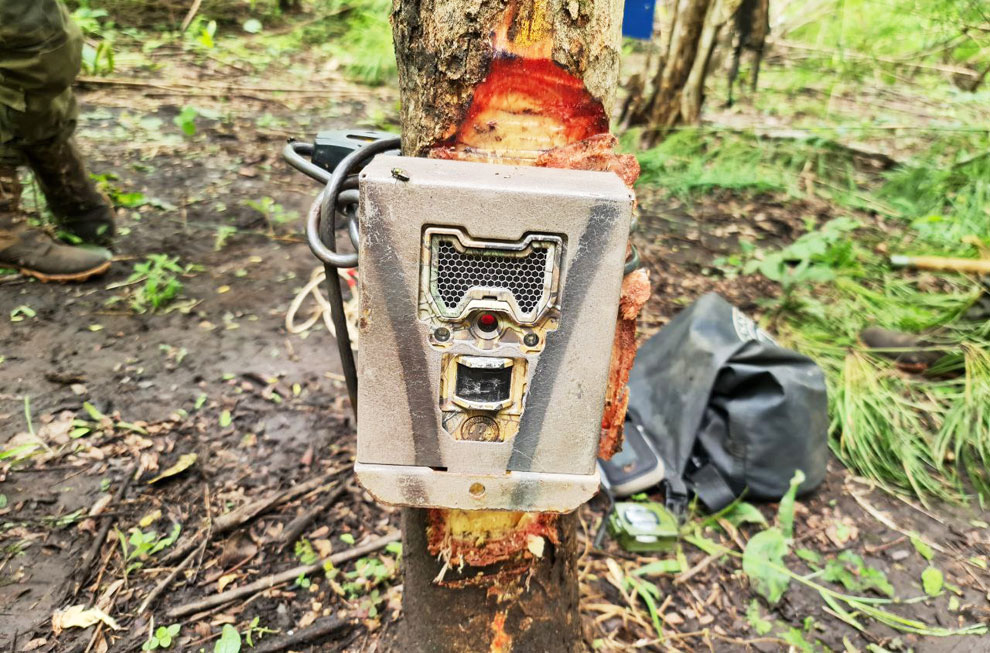
Pilot study using camera trap in wildlife sanctuary in Mondulkiri province on August 28. ENVIRONMENT MINISTRY
Researchers from the Mondulkiri provincial Department of Environment have deployed motion-sensor cameras at 25 sites in Sre Pok Wildlife Sanctuary to monitor the number of red muntjac, amid concerns that its population may be declining due to illegal hunting and trapping.
The 25 camera trapped were installed on August 28 with the support and involvement of staff from World Wild Fund for Nature (WWF Cambodia) to monitor the number of red muntjacs in the sanctuary.
According to the environment department, red muntjac is a small species of deer with males having short antlers of only 10cm to 15cm in length as well as longer teeth to battle other males during mating season. They have a black stripe down their faces and a yellow-brown coat of fur that is darker on top and lighter at the bottom.
Also known as Indian muntjac, the animal is not considered an endangered species but is listed on the International Union for Conservation of Nature (IUCN) Red List as a species dependent on conservation in all of the regions it lives in, including India, southern China, Cambodia and its neighbours in Southeast Asia as well as Sumatra, Java and Bali islands of Indonesia.
The provincial department said this species may be at risk in Cambodia, now or in the future, due to illegal hunting and trapping for its meat.
“Red muntjacs sometimes exchange calls with each other at distances of up to 1km and will do so for up to an hour when in distress. Their food consists of foliage and plants, especially plant leaves, fallen fruits and seedlings. In some areas, they are active and forage during the day, but it can also be active and forage throughout the night if there is a disturbance,” it said, noting that they are also known as “barking deer” in some countries due to their noisy calls.
Provincial department director Keo Sopheak told The Post on August 29 that after installing the camera traps, researchers will continue to collect captured images and footage of red muntjacs on an ongoing basis to estimate the size of the population that remains in the area.
He said the research project could be completed by the end of this year and experts will do a statistical analysis based on the number of animals captured in the images, the size of the area being monitored and the distances typically ranged by red muntjacs over an equivalent time period.
“We collect the pictures every week and our officers will take this data to analyse and document the appearance of the heads of the species to identify every red muntjac we can find in the sanctuary, but that process hasn’t begun yet.
“The researchers will also do an analysis of how or whether the red muntjac in Cambodia may be different to other muntjac species just in case it is a unique sub-species, but we may not find any differences as they could all just be one species,” he said.
According to Sopheak, a study between 2012 and 2014 found that the Srepok Wildlife Sanctuary in Mondulkiri had more than 1,000 red muntjacs, but noted that this figure may have declined or still be declining due to illegal poaching.
“We suspect that, due to hunting activities, the number of red muntjacs has decreased. That is why the department, in collaboration with WWF Cambodia, is working on this again,” he said.








